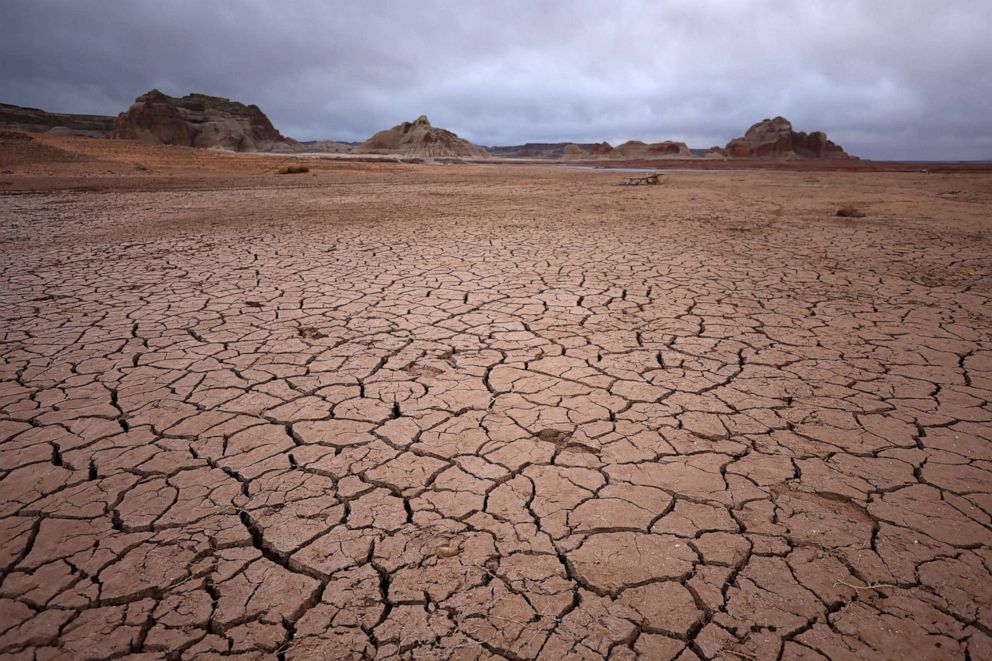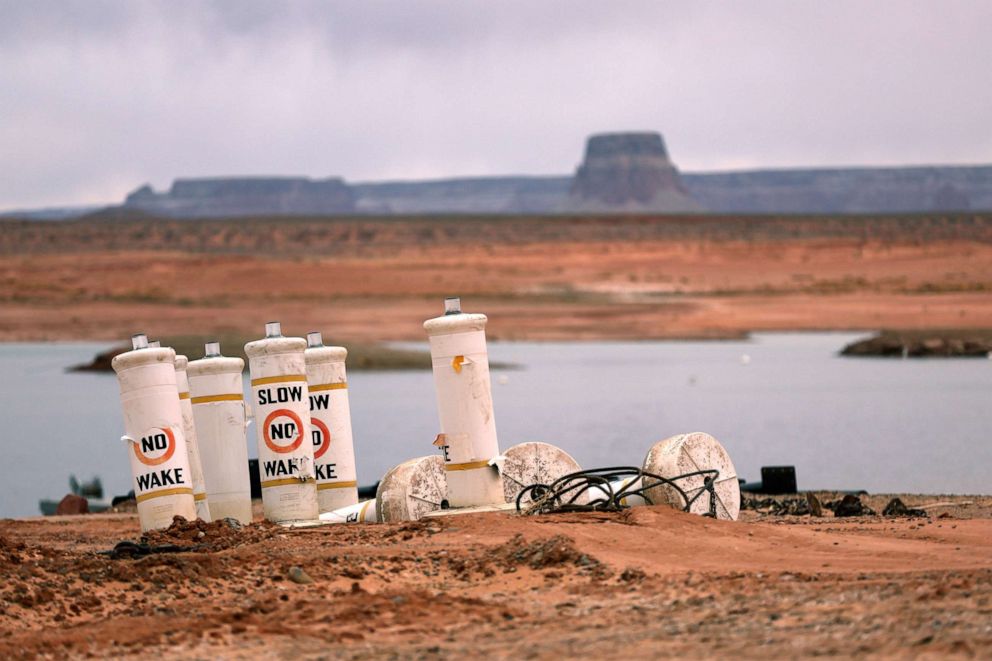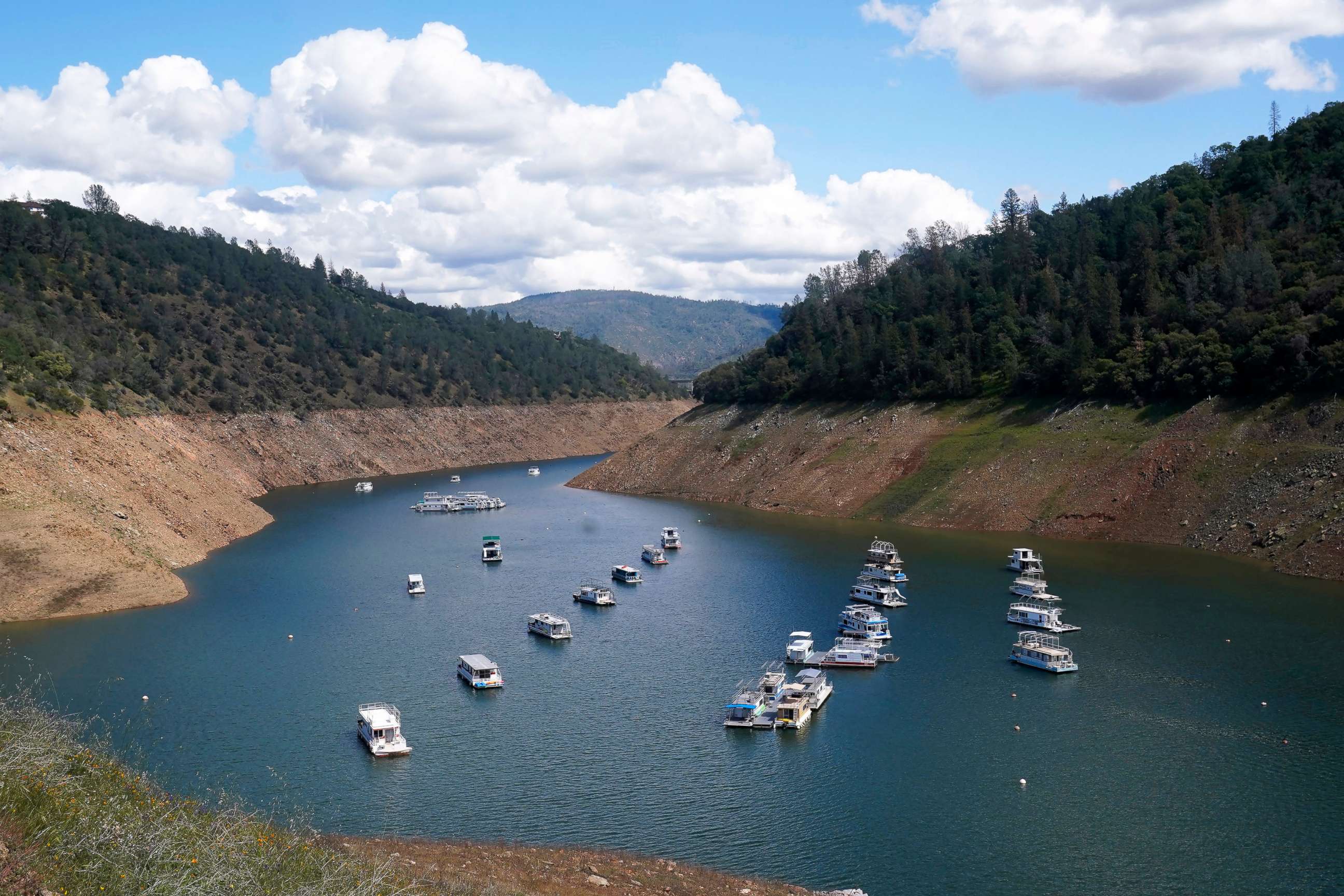Megadrought out West expected to intensify, expand east: NOAA
California only received 15% of its normal precipitation through March.
The megadrought that has plagued the West for several decades is not only expected to persist, but drought conditions will also likely intensify and expand east, according to the National Oceanic and Atmospheric Administration.
About 55% of the continental U.S. is experiencing drought conditions, which will likely worsen in the Great Plains, particularly the central and southern Plains, such as Texas and Oklahoma, NOAA scientists said during a monthly climate call Thursday.
These areas will be experiencing extreme fire danger on Friday as conditions are worsened by the arid landscape and ground fuel that allows wildfires to explode. The region will likely see well below the average precipitation as the summer months approach, according to NOAA.

Many places in the West have been experiencing drought for three consecutive years without any significant recovery in sight.
California and Nevada are already breaking records for dryness this year, after they both had their driest period of January through March on record. This is the time of year that the region typically receives the most rain and snow, making the statistic all the more concerning, the scientists said. California's snowpack is currently at 30% of its average.

So far in 2022, California has only received 15% of its normal precipitation. In 2021, California received 65% of its normal precipitation during this same period.
This year will likely be among the top 10 warmest on record, according to NOAA. Globally, March was sixth warmest on record, and record warm March temperatures were observed across 5% of the global area, according to NOAA.

In Antarctica, where summer just transitioned to fall, one station reached its highest temperature ever recorded, and temperatures at one point were up to 70 degrees above average, the scientists said.
Research indicates that climate change is contributing to the extent, severity and duration of the drought in the Western U.S. The drought is likely to cost the U.S. billions of dollars in 2022, the scientists said.



